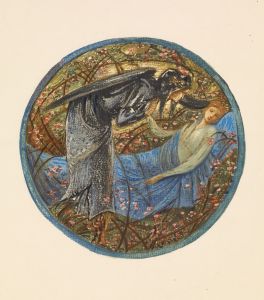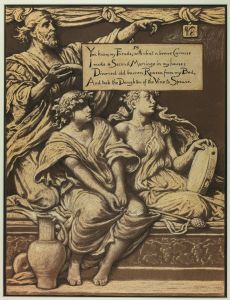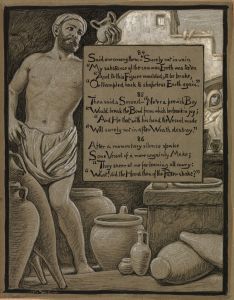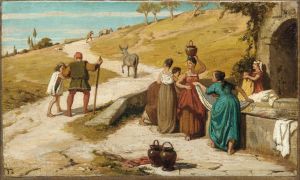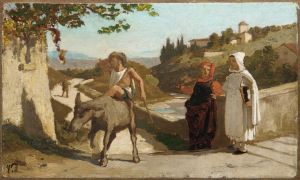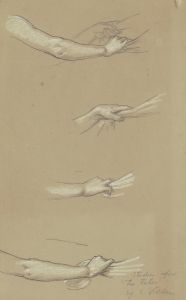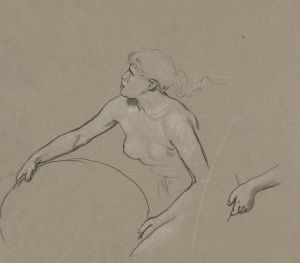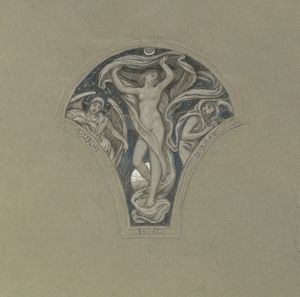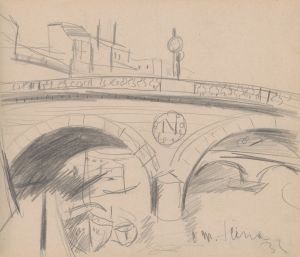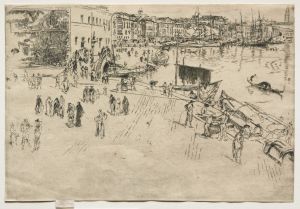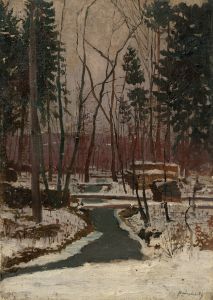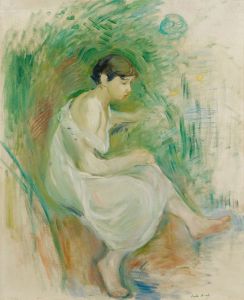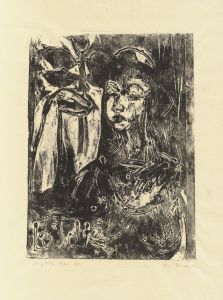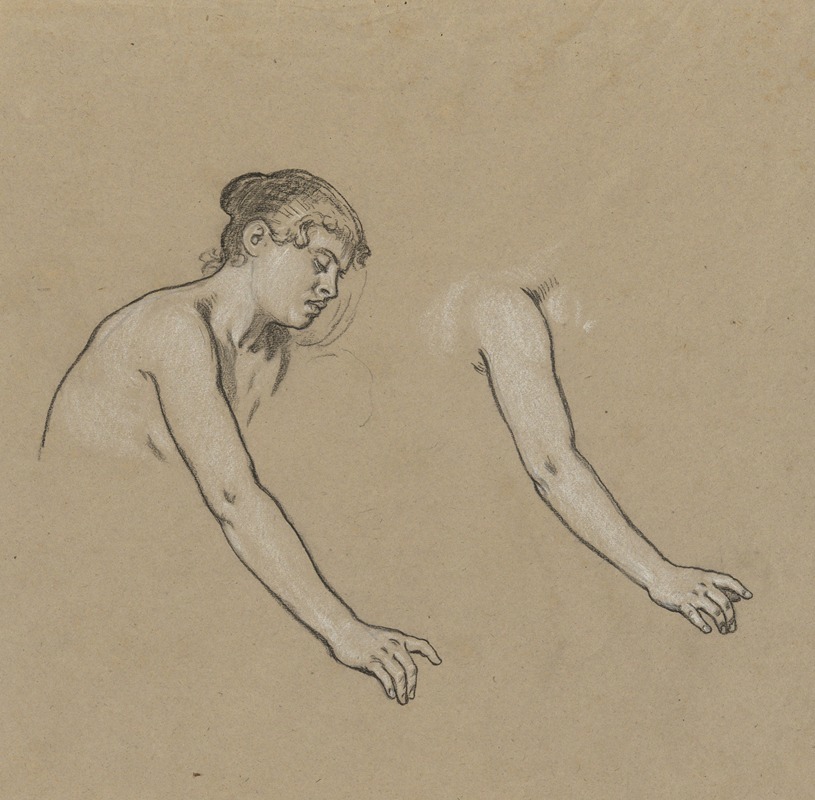
Studies for Figure of Winter
A hand-painted replica of Elihu Vedder’s masterpiece Studies for Figure of Winter, meticulously crafted by professional artists to capture the true essence of the original. Each piece is created with museum-quality canvas and rare mineral pigments, carefully painted by experienced artists with delicate brushstrokes and rich, layered colors to perfectly recreate the texture of the original artwork. Unlike machine-printed reproductions, this hand-painted version brings the painting to life, infused with the artist’s emotions and skill in every stroke. Whether for personal collection or home decoration, it instantly elevates the artistic atmosphere of any space.
Elihu Vedder was an American symbolist painter, known for his imaginative and often mystical works. One of his notable pieces is "Studies for Figure of Winter," which showcases his unique style and thematic interests. Vedder was born in 1836 and became a prominent figure in the American art scene during the late 19th and early 20th centuries. His work often explored themes of mythology, allegory, and the human condition, drawing inspiration from a wide range of sources, including literature, philosophy, and his own personal experiences.
"Studies for Figure of Winter" is a preparatory work that reflects Vedder's meticulous approach to composition and his interest in capturing the essence of the seasons through human figures. Although specific details about this particular study are limited, it is consistent with Vedder's broader body of work, which frequently features allegorical representations of natural elements and abstract concepts.
Vedder's artistic process often involved creating multiple studies and sketches before finalizing a composition. This allowed him to experiment with different poses, expressions, and arrangements, ensuring that the final piece conveyed the intended message and emotional impact. "Studies for Figure of Winter" likely served as a preliminary exploration of these elements, providing insight into Vedder's creative process and his ability to translate complex ideas into visual form.
Throughout his career, Vedder was influenced by various artistic movements and styles, including the Pre-Raphaelites and the Aesthetic Movement. His work is characterized by a strong sense of narrative and symbolism, often incorporating elements of fantasy and dreamlike imagery. This approach is evident in "Studies for Figure of Winter," where the figure may be depicted in a way that evokes the cold, introspective qualities of the winter season.
Vedder's contributions to the art world extend beyond his paintings. He was also an accomplished illustrator, most notably for the 1884 edition of Edward FitzGerald's translation of "The Rubaiyat of Omar Khayyam." His illustrations for this work are considered some of his finest achievements, showcasing his ability to blend text and image in a harmonious and evocative manner.
In summary, "Studies for Figure of Winter" by Elihu Vedder exemplifies the artist's skill in using allegory and symbolism to explore complex themes. While specific details about this study are scarce, it remains an important part of Vedder's oeuvre, reflecting his dedication to capturing the essence of human experience through art. His work continues to be celebrated for its imaginative qualities and its ability to transcend the boundaries of traditional artistic expression.





